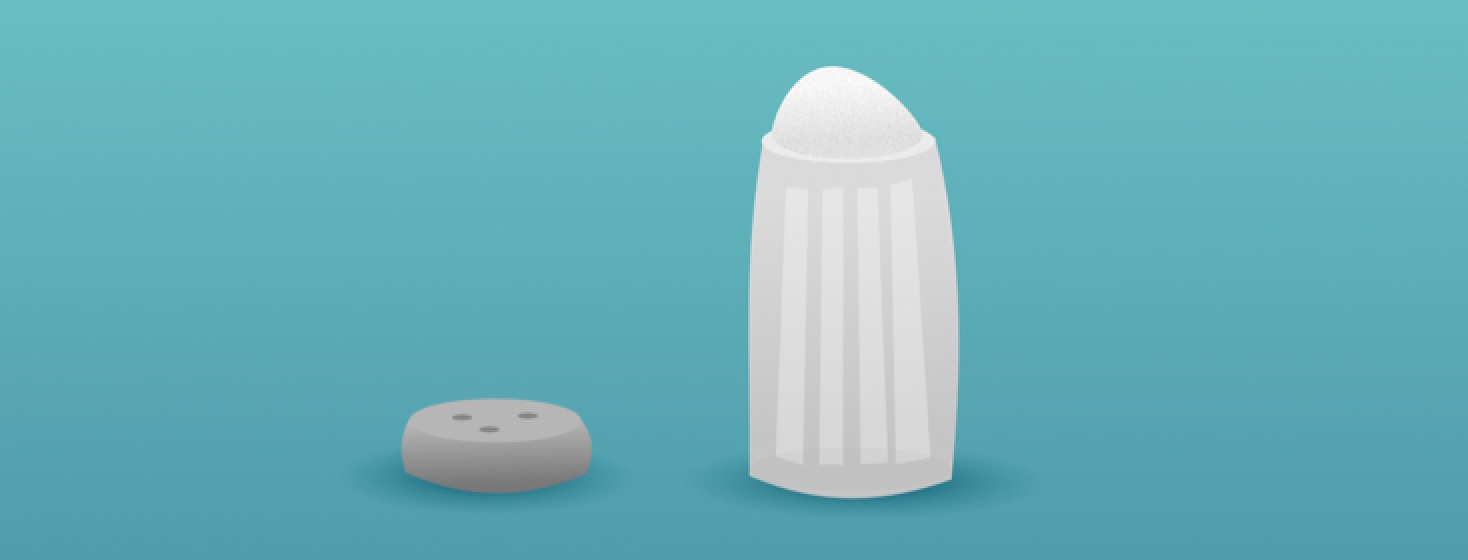Type 2 Diabetes: The Sodium Factor and Hypertension
Within my own personal health history, hypertension remained low on the list of concerns. Before being diagnosed with type 2 diabetes, birth control pills did appear to influence borderline high readings and going off them brought readings back down to normal. Whatever I did to control blood glucose levels seemed to influence blood pressure after the type 2 diabetes diagnosis, and usually readings ended up being borderline low or normal.
What's causing the high blood pressure?
Fast forward to life in a cold snowy Minnesota winter, and I am again seeing higher blood pressure readings. Could it be the lingering stress of the cross-country move? Could it be an unintentional reduction in exercise? Could it be perimenopausal hormones? Could it simply be the nervousness of meeting a new health care professional? All the factors combined could be creating a perfect storm, however, the primary care physician’s focus was on reducing sodium in my diet.
“But I am very sensitive to the taste of salt, and if food tastes too full of sodium, I will not eat it,” I then explained to the doctor. Seriously, I have been known to throw out food that tastes too full of preservatives, such as sodium, and I would rather go without any type of salt for seasoning, choosing instead other spices to enhance flavor.
Knowing that control of blood pressure is important for personal heart health risk factors – type 2 diabetes along with family history of hypertension and coronary artery disease, this was a situation not to be taken lightly, especially now that I am over forty. I wanted to focus on the factors I knew were influencing a possible rise in blood pressure, particularly the change in hormones that could be problematic, and not the troublesome nutrient to which I had such a strong aversion.
Sodium hiding in unexpected foods
Until one day when I stood waiting for my frozen prepared meal to heat up in the microwave, and looked at the sodium content on the nutrition label. Fifty-three percent of the recommended daily allowance?!? I knew that some of the fast-casual meals I ate once or twice a week might be overboard on sodium, but this meal made by a very well-known organic foods company surprised me.
When I got home that evening, a scan of the other meals in the freezer revealed more distressing levels of sodium. While nothing was quite as high as the first one I saw, it forced a reality check on just how much these convenience foods were contributing towards meeting or exceeding the recommended daily allowance on a nutrient not recommended to be met or exceeded. More often than not, these kinds of meals were fueling my body twice a day, not just once, and I started to understand how that might have become an issue with blood pressure.
Small changes to limit sodium
Now that I am more settled after the move, professionally and personally, it is time to begin reading nutrition labels again, both for carbohydrate content and for sodium. Just like any change in lifestyle regimen I made in the past, smaller steps are how I am tackling these blood pressure concerns. Limiting convenience foods to weekday lunches is a start, as is making meals in batches on the weekends to ensure that dinner is a healthy home-cooked meal.
It remains to be seen at my next appointment in a couple months whether these small changes along with an increase in exercise and treatment for vitamin D deficiency will make a dent in the unruly blood pressure values, particularly if hormonal changes are playing a role that I cannot control. At that time, I will consider medication as a next step if nothing has reduced blood pressure down to the levels that I am used to seeing.

Join the conversation